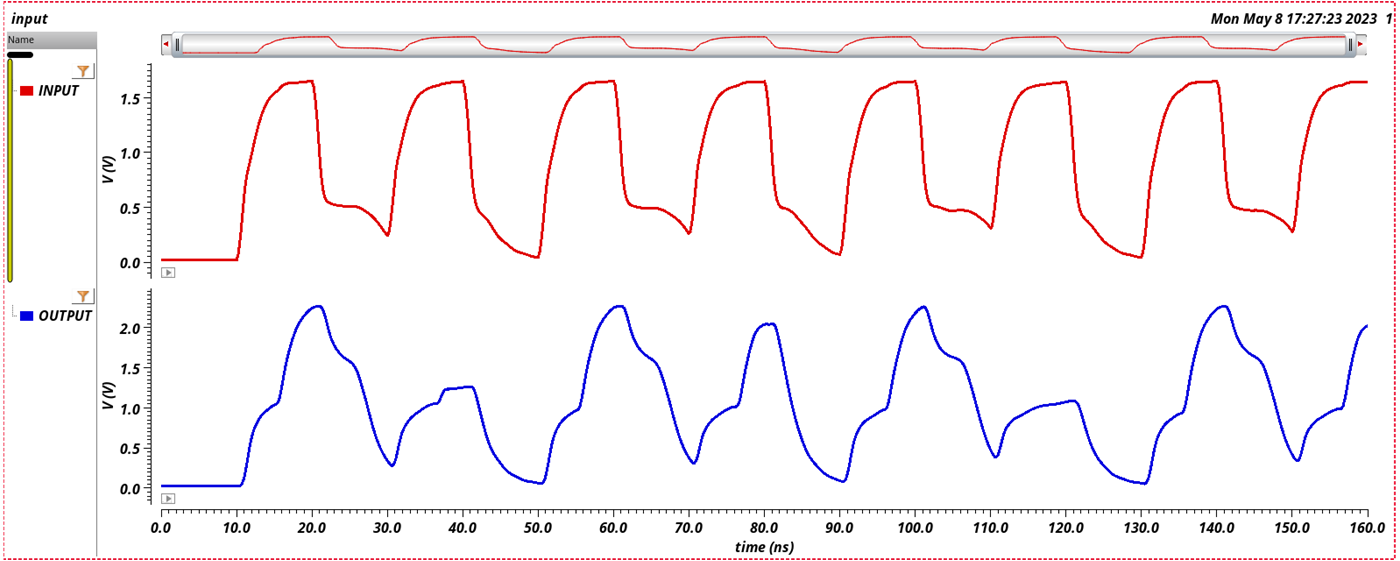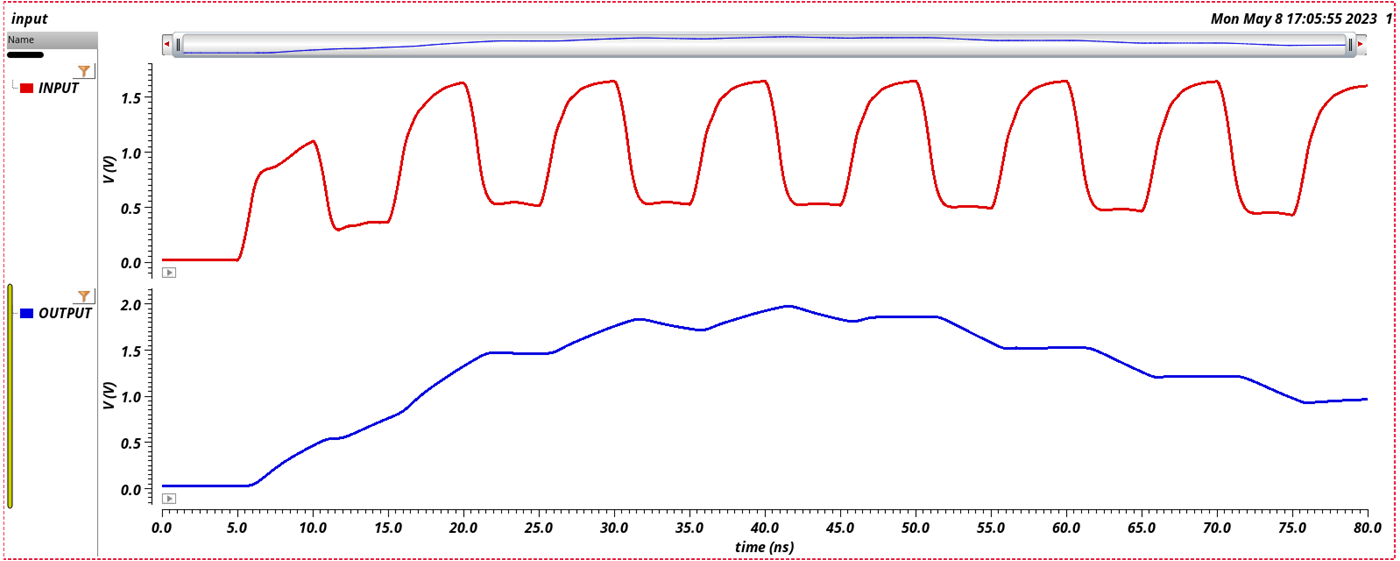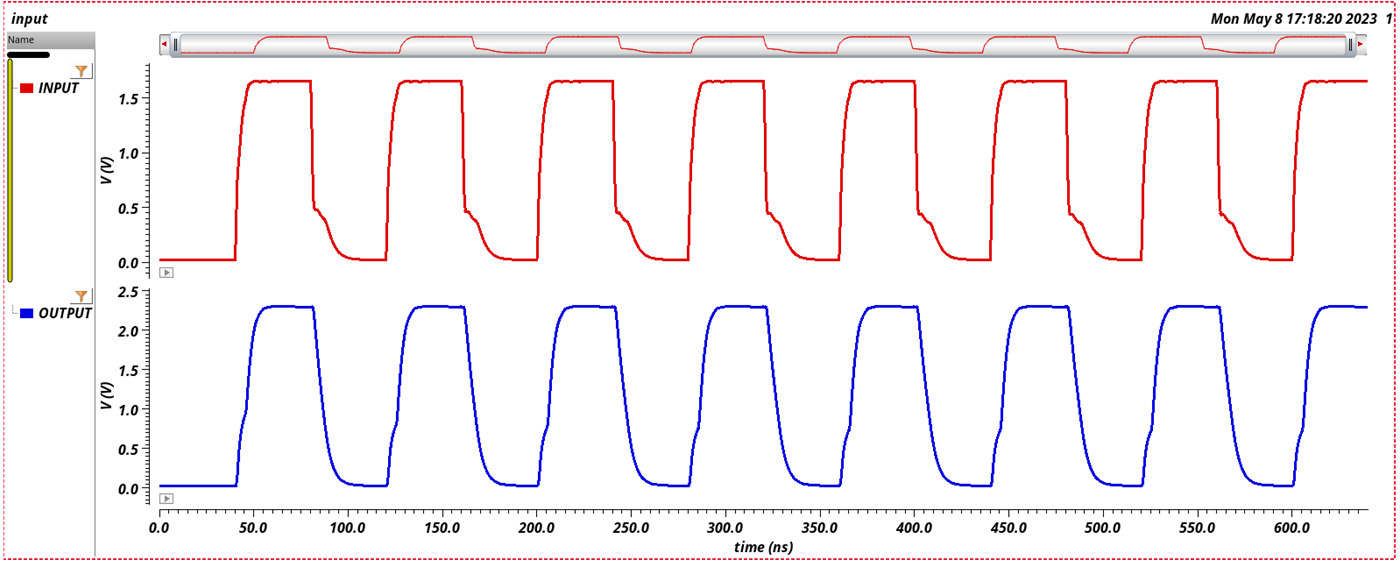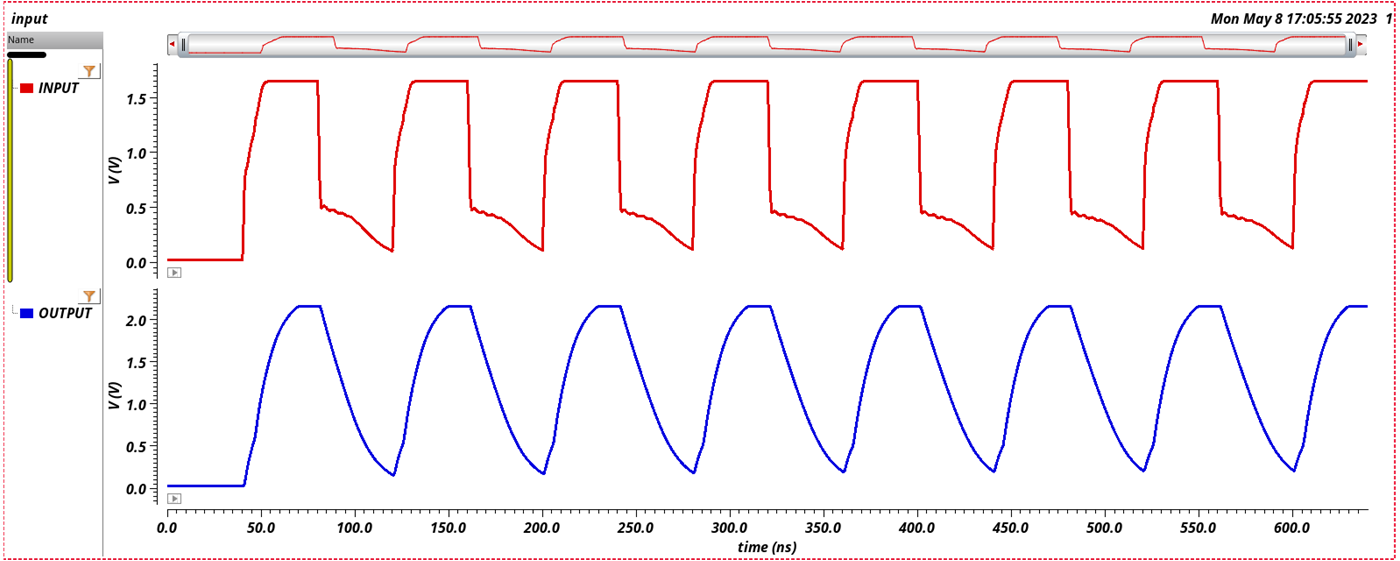SCEA131 September 2023 TXB0101 , TXB0102 , TXB0104 , TXB0104-Q1 , TXB0106 , TXB0106-Q1 , TXB0108 , TXB0108-Q1 , TXB0302 , TXB0304 , TXS0101 , TXS0101-Q1 , TXS0102 , TXS0102-Q1 , TXS0104E , TXS0104E-Q1 , TXS0108E , TXS0108E-Q1
3.4 Effects of Speed and Loading on One-Shots
 Figure 3-5 15 pF Load Above the Max
Data Rate
Figure 3-5 15 pF Load Above the Max
Data Rate Figure 3-6 100 pF Load Above the Max
Data Rate
Figure 3-6 100 pF Load Above the Max
Data RateFigure 3-13 and Figure 3-11 show examples of the one-shot performing at varying loads with their impact. With faster data rates, the one-shot can time-out early. This will affect the signal not being pulled high enough for the desired output voltage levels.
 Figure 3-7 15 pF Load Below the Max
Data Rate
Figure 3-7 15 pF Load Below the Max
Data Rate Figure 3-8 100 pF Load Below the Max
Data Rate
Figure 3-8 100 pF Load Below the Max
Data RateLower speeds are typically achievable with higher loads and vice-versa, as observed in Figure 3-14 and Figure 3-18. For optimal operation, lower loads should be considered for faster speed applications. Unless otherwise noted in the data sheets, >70pF at faster speeds above the recommendation will impact the one-shot designed duration which can cause false triggers for system failure.
 Figure 3-9 Lumped Capacitance Impact at
Max Data Rate
Figure 3-9 Lumped Capacitance Impact at
Max Data RateThe one-shot works closely with RC, which significantly impacts the speed performance of the devices as the data rate is dependent on the RC circuitry. While strong pull-ups are not recommended for the TXB and TXS devices, careful considerations for lumped capacitive loading should be ensured per the data rate requirements, similar to the TXS or TXB data sheet recommendation. As shown, the one-shot can trigger for unwanted outputs and overall system failures. In addition to the loading, long traces and connectors will also add parasitic capacitance to the overall lumped capacitance.